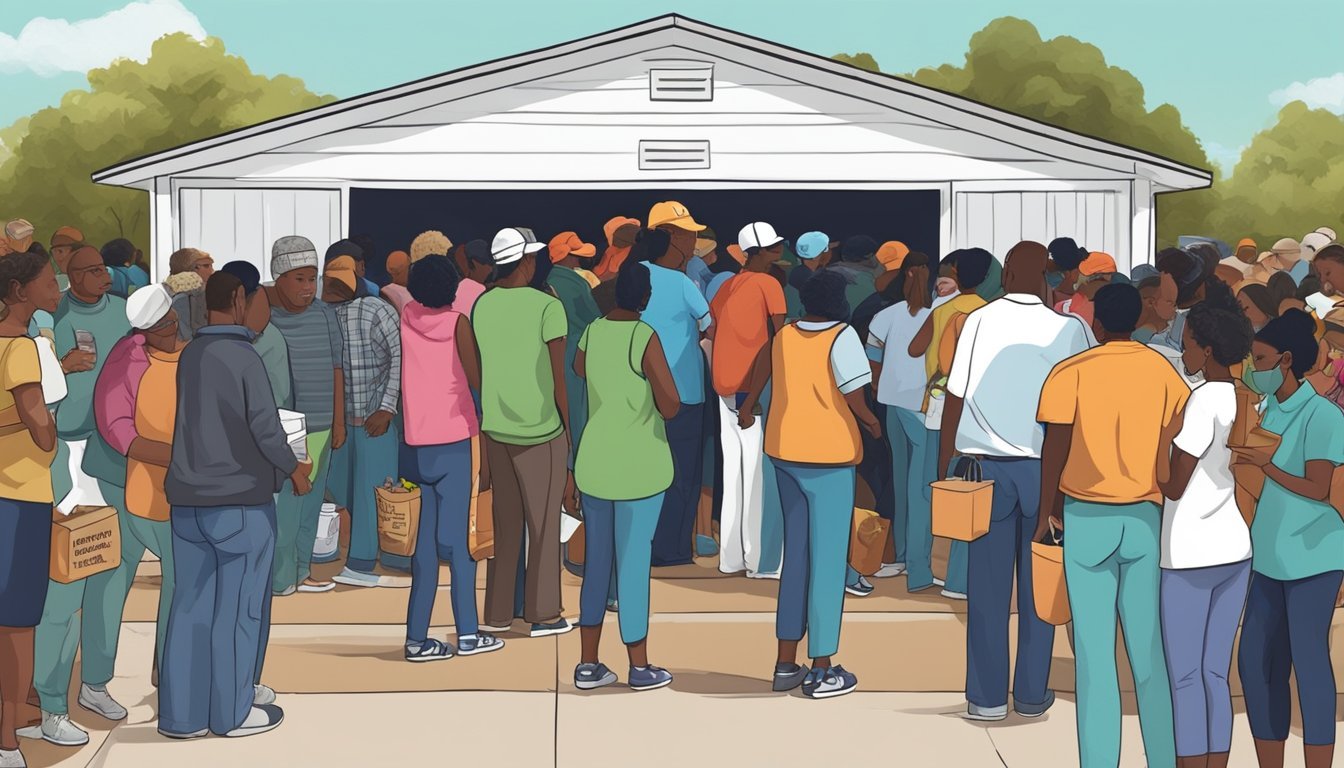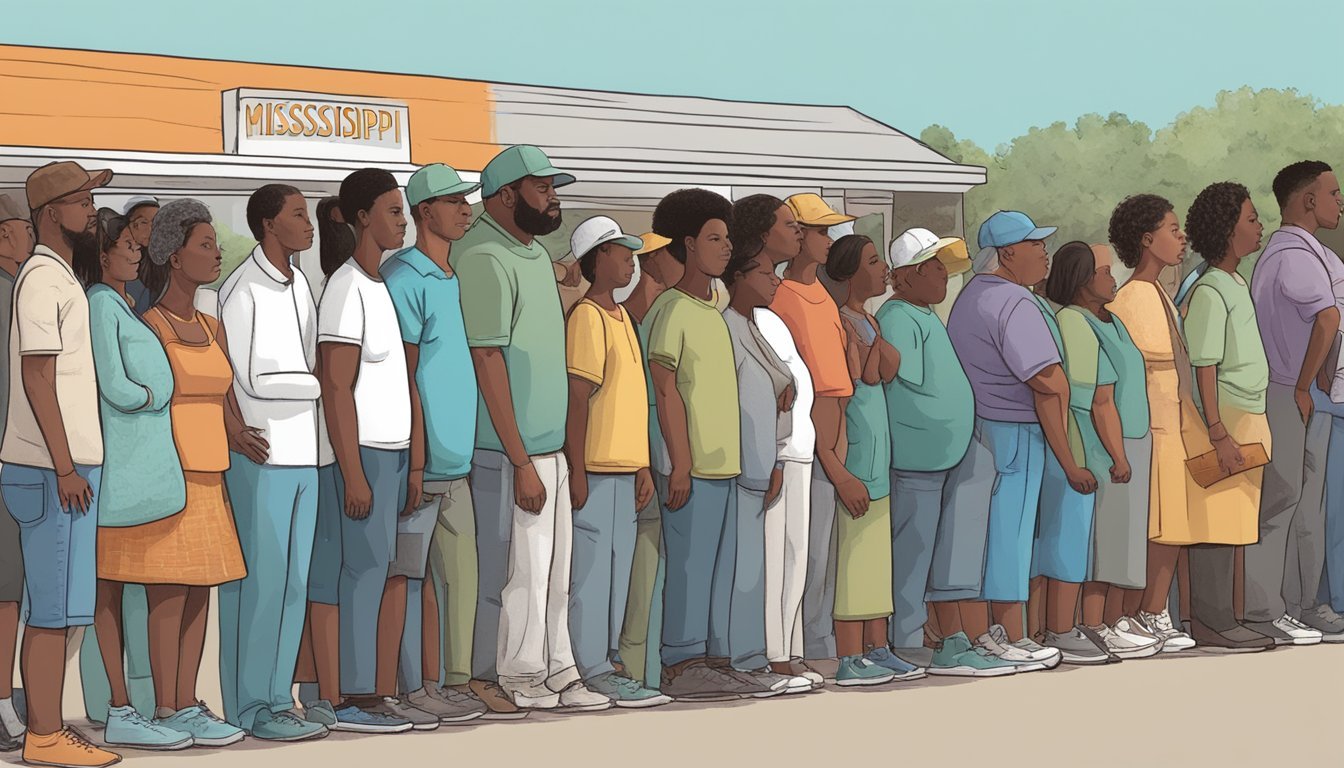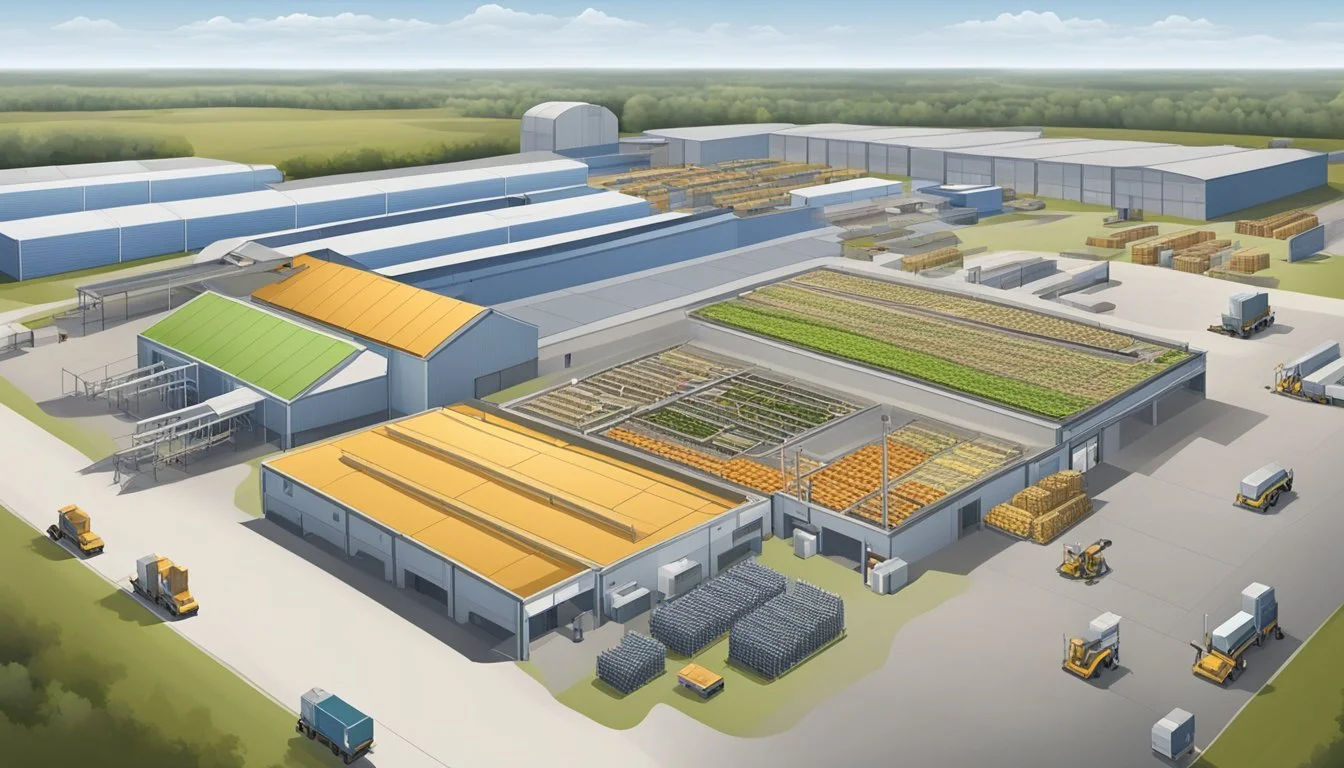Mississippi Food Challenges
A Guide to Testing Your Limits
Mississippi grapples with a pervasive issue that affects many of its residents: food insecurity. With rates of food insufficiency that outstrip national averages, the state faces a significant challenge in ensuring that all of its citizens have access to enough nutritious food. Despite improvements in some areas, the struggle to meet the basic dietary needs of many Mississippians persists. This situation has prompted concerted efforts from local organizations and agencies to remediate the hunger problem across the state.
Food insecurity in Mississippi is not merely a statistic; it represents a day-to-day reality for a substantial portion of the population. Various factors contribute to this situation, including economic instability, high poverty rates, and lack of access to healthy and affordable food. These challenges are reflected in the state's food insecurity rates, which, as recent studies have indicated, are higher than those in the rest of America. The state's community health centers and food networks have thus been tasked with a critical role: collaborating to address and alleviate the widespread food challenges present throughout Mississippi.
Historical Context of Food Insecurity in Mississippi
In Mississippi, historical complexities have converged to create one of the most enduring challenges in the nation's food security landscape. The stark realities of poverty and unemployment have compounded over time, with recent crises like Covid-19 exacerbating the situation.
Impact of Poverty and Unemployment
Mississippi's struggle with food insecurity is deeply intertwined with its high rates of poverty and unemployment, especially in the Mississippi Delta. According to the Mississippi Food and Nutrition Security State Profile, these economic afflictions have placed significant portions of the population in precarious positions, lacking access to sufficient, safe, and nutritious food. Historically, the state's economy, heavily reliant on agriculture and manufacturing, has not translated into widespread prosperity, leaving a trail of food deserts and limited access to resources that can combat food insecurity.
Effects of Covid-19 on Mississippi Food Systems
The onset of the Covid-19 pandemic brought to light the fragility of the food systems in place. Food supply chains were disrupted, and the demand for food assistance surged as more individuals found themselves out of work. Key resources in the state's fight against hunger, such as the Community First Research Center for Wellbeing and Creative Achievement, have documented significant increases in food insecurity rates during this period. The pandemic underscored the gaps in the existing infrastructure and the urgent need for robust, resilient solutions to support Mississippi's vulnerable populations.
Geographical Challenges and Grocery Accessibility
Mississippi's topography and dispersed population present distinct challenges for grocery accessibility. This section addresses the complexities specific to rural areas and the distribution and availability of grocery stores.
Rural Areas and Food Deserts
In the rural regions of Mississippi, especially within the delta areas, residents encounter significant obstacles in accessing fresh food options. The term food deserts aptly describes vast expanses in these locations, characterized by a paucity of grocery stores. The Lower Mississippi Delta is particularly affected, with its predominantly low-income communities experiencing profound difficulties due to the limited presence of food retailers.
Grocery Store Distribution and Availability
Grocery store distribution in Mississippi does not evenly cover all inhabited areas. While urban settings may have a variety of food purchasing options, rural and delta areas often lack sufficient grocery store availability. The disparity in the number of stores contributes to geographic inequalities in food accessibility, where rural populations must sometimes travel great distances to purchase groceries, limiting their ability to regularly access fresh and healthy food options.
Nutritional Education and Resources
Mississippi faces significant challenges in providing nutritional education and resources to its population. Integral to combatting these issues are comprehensive programs targeting schools and the widespread promotion of healthy eating habits.
School and Youth Programs
In the Mississippi Delta, educational initiatives in schools aim to implement healthy food options for children and youth. The Expanded Food and Nutrition Education Program (EFNEP), operated by the Mississippi State University Extension, provides vital nutrition education across the state, focusing on economically challenged communities. Programs like HOME Plus study take action by assessing family home food environments and their impact on the nutrition-related outcomes of parents and children.
Another key component of school-based initiatives is the awareness and integration of nourishing diets in school curriculums. Activities within these frameworks not only include education on healthy eating but also on physical activity, recognizing the close relationship between diet and exercise.
Public Awareness Initiatives
Beyond the classroom, public awareness initiatives in Mississippi work towards a broad understanding of nutrition's role in health. The Mississippi Department of Human Services plays a crucial role with its Supplemental Nutrition Assistance Program Education (SNAP-ED), which fosters public education about nutrition and provides resources to support healthy lifestyles.
The dissemination of nutritional knowledge is further reinforced through online resources, such as those available on the Mississippi State University Extension Service website, offering versatile educational materials and contacts for local food assistance programs. These are essential tools in bridging the gap for Mississippi families seeking accessible and healthy food options.
Public Assistance and Food Aid Programs
In Mississippi, public assistance programs like SNAP alongside numerous food banks and pantries provide vital support to those experiencing food insecurity. These services are critical resources for low-income families, aiming to alleviate hunger across the state.
SNAP and Food Pantries
Supplemental Nutrition Assistance Program (SNAP) benefits assist low-income Mississippians in purchasing food. Families often rely on these funds to supplement their grocery budgets. However, stringent eligibility requirements can put recipients at risk, as highlighted by a report from the Center on Budget and Policy Priorities, which noted that almost 7,000 adults in the state could lose their SNAP benefits due to new legislation.
In addition to SNAP, food pantries throughout Mississippi play a key role. These community-driven organizations provide emergency food assistance to those in need. Many of them operate through donations and volunteer support, offering both perishable and non-perishable items to fill the gap that public assistance may not cover.
Mississippi Food Network and Local Food Banks
The Mississippi Food Network (MFN) acts as a central figure in the fight against hunger. Their operations include backpack programs, summer food service, after-school meals, and mobile pantries. The MFN coordinates statewide efforts, such as benefits enrollment and disaster response, to counteract food insecurity. A profile of the organization describes its comprehensive approach, including senior food boxes and healthy food incentive programs.
Local food banks complement the work of MFN by distributing food across various regions in Mississippi. They secure, store, and provide food to hundreds of food pantries, meal sites, and shelters. Food banks serve as the foundation of emergency food assistance, ensuring resources are available where and when they are most needed. The Mississippi Food Network is one such entity, tackling the state's pressing hunger problem and supporting hundreds of thousands facing food insufficiency.
Agriculture and Local Food Production
The agricultural sector in Mississippi plays a vital role in bolstering local economies and ensuring food security. Efforts to support local farmers and implement robust agricultural policies are key drivers for economic growth and the development of local food systems.
Supporting Local Farmers
Local farmers are the cornerstone of Mississippi’s agriculture, and their success is intricately tied to the local food markets. Initiatives to strengthen farmers’ market presence have been pivotal in increasing access to fresh, local foods. In recent years, Mississippi has witnessed a rise in the number of farmers markets, from 54 to 95 between 2010 to 2017, indicating a growing consumer and community engagement with local food producers.
Market Development Strategies:
Enhancing farmers market infrastructure
Increasing consumer awareness through marketing
Facilitating direct sales opportunities for farmers
Support systems, such as training for farmers on best practices and business acumen, are essential to ensure they can thrive in an increasingly competitive marketplace.
Agricultural Policy and Economic Growth
Agricultural policies at both state and local levels shape the prospects for sustained economic growth within the food and agriculture sector. A focus on local food system development can be found in various guiding documents outlining how governments can support farmers markets and other local food initiatives.
Key Policy Areas:
Incentives for Small-scale Farmers: Providing financial support and resources to help local farmers compete with larger agricultural enterprises.
Land Use and Zoning Regulations: Adjusting regulations to allow for more local food production and distribution options within communities.
Educational and Networking Opportunities: Offering workshops and creating platforms for farmers to connect with buyers, advocates, and each other.
Such policies not only assist in achieving food security but also contribute to job creation and the preservation of local farming traditions.
Food Challenges and Community Involvement
Mississippi's food challenges, notable for their extent, reverberate through the community, necessitating innovative engagement and cultural initiatives for mitigation.
Creating Community Engagement
Community engagement in Mississippi works as a cornerstone in addressing food insecurity, which affects more than 16% of its residents. Initiatives such as local food banks have proven essential; they spearhead efforts to provide immediate relief to those in need. These entities mobilize a network of volunteers and donors to tackle the hunger problem head-on. Additionally, intervention programs focus on educating communities on sustainable practices to build long-lasting food security.
Cultural Food Events
Cultural food events in Mississippi serve the dual purpose of celebrating the state's rich culinary heritage and drawing attention to ongoing food challenges. These gatherings include festivals, farmers' markets, and cooking classes that highlight local ingredients and cooking traditions. By fostering a sense of cultural pride, these events promote unity and collective action against food scarcity, while also boosting the local economy and supporting Mississippi's agricultural sector.
Addressing Systemic Issues and Inequality
Mississippi's approach to combating food insecurity necessitates addressing underlying systemic issues and inequalities. This includes tackling both racial injustices and economic insecurity, which are deeply entwined in the state's food challenges.
Overcoming Racial Injustices
Historically, racial disparities in Mississippi have played a critical role in access to nutritious food. African American communities, specifically, experience higher rates of food insecurity due to systemic barriers such as limited access to grocery stores with healthy options and equitable employment opportunities. Efforts like the Mississippi Food Justice Collaborative focus on transforming food systems through advocacy and the empowerment of these communities.
Initiatives: Community-led food programs, awareness campaigns, and policy advocacy.
Goal: To ensure equitable access to food and reduce disparities.
Improving Economic Insecurity
Economic insecurity, a driver of food insecurity, affects a significant portion of Mississippi's population. The high rates of poverty in the state exacerbate the difficulty of accessing adequate nutrition. Programs to combat these challenges, such as food prescription programs highlighted in a report by the Food is Medicine organization, have begun to emerge, integrating systems thinking to address both immediate needs and long-term economic conditions.
Strategies: Enhancing state and community-level support systems, increasing job opportunities, and expanding social safety nets.
Objective: To stabilize household incomes and enable consistent access to food.
Technology and Innovation in Food Distribution
Advances in technology have significantly reshaped the landscape of food distribution, offering novel solutions to tackle the challenges of food insecurity in Mississippi. These technologies leverage digital outreach and innovative design to create a more robust and secure food system.
Digital Platforms and Outreach
The use of digital platforms has streamlined the connectivity between food producers and consumers, enhancing access to fresh produce. Websites such as the Mississippi Food Network efficiently link food assistance programs with those in need. Furthermore, data analytics serve to optimize the distribution routes, reducing waste and ensuring timely delivery.
Websites act as centralized hubs where individuals can find local food banks, meal programs, and support services.
Outreach through social media and mobile apps increases awareness and volunteer participation.
Designing Solutions for Food Insecurity
In response to food insecurity, technology plays a crucial role in designing effective solutions:
Mobile apps that track inventory levels reduce spoilage and redirect resources to areas with higher demand.
Community-based web platforms encourage the sharing of resources and foster collaborative approaches to manage food supplies.
Data-driven insights aid in the creation of responsive supply networks.
Innovative website designs make it easier for people to apply for food assistance or donate to food banks.








